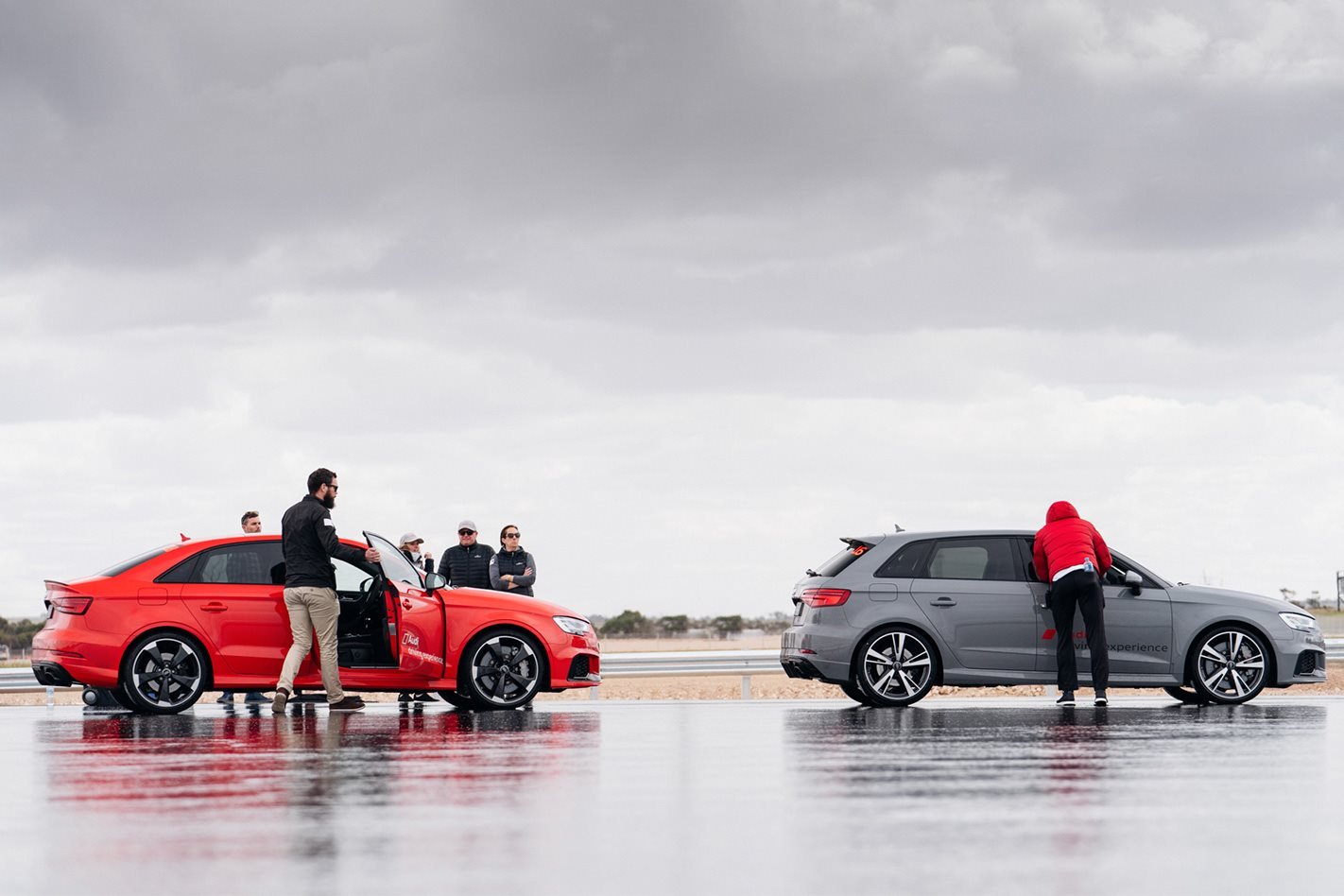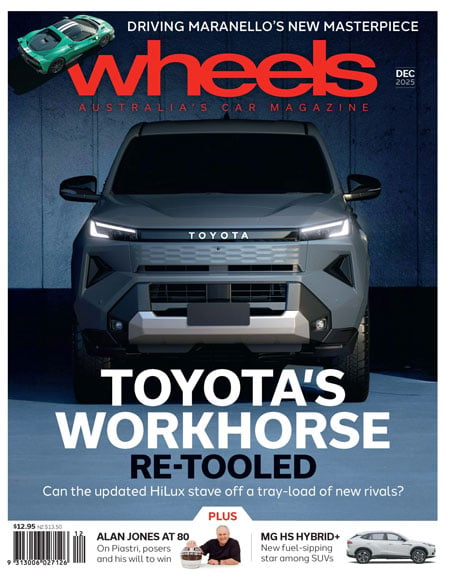Slow is smooth and smooth is fast.
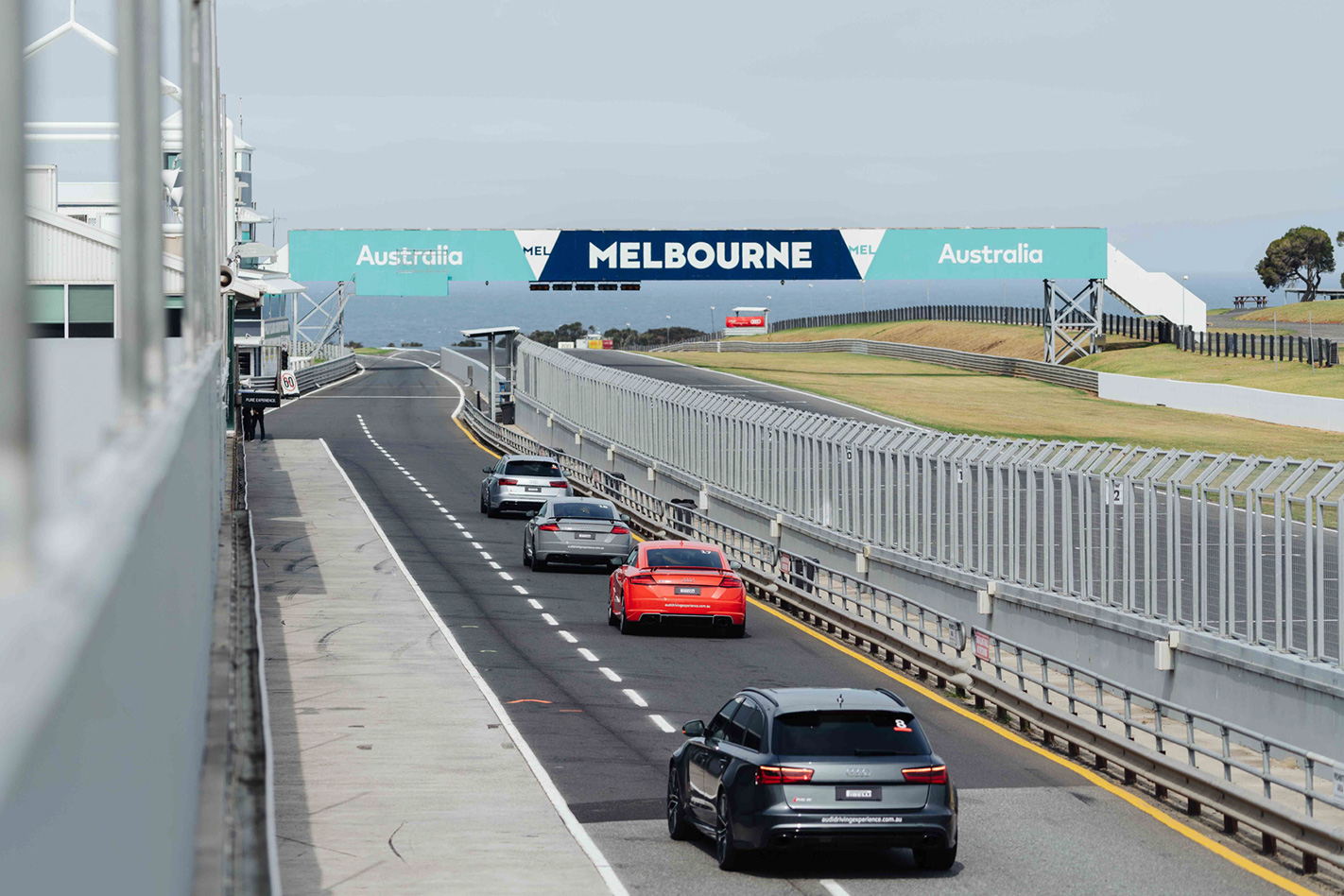
It’s the racing driver axiom that holds true in any form of motorsport. Keeping your focus and the car steady – not jolting it around like a caffeine-riddled taxi driver – is a sure way to quickly improve driving skill.
Of course, given the opportunity, it’s all too easy to stomp the right foot and hook into a corner in an awful rendition of pretending to be Lewis Hamilton. Particularly with modern day cars disguising how unsettling such heroic manoeuvres really are on the chassis.
The red mist thickens to sleet when you’ve signed you’re life away (or, signed up to be better at keeping it) to learn how to really drive at the Audi Driving Experience. You feel the instructors already sizing you up for potential hoon-factor before you even sit down, but once you’re out on the track, sitting alone in anything from the crackling five-pot RS3 to the sizzling 397kW R8 V10, a little cheeky dab on the throttle to separate the boys from the men is easy, right?
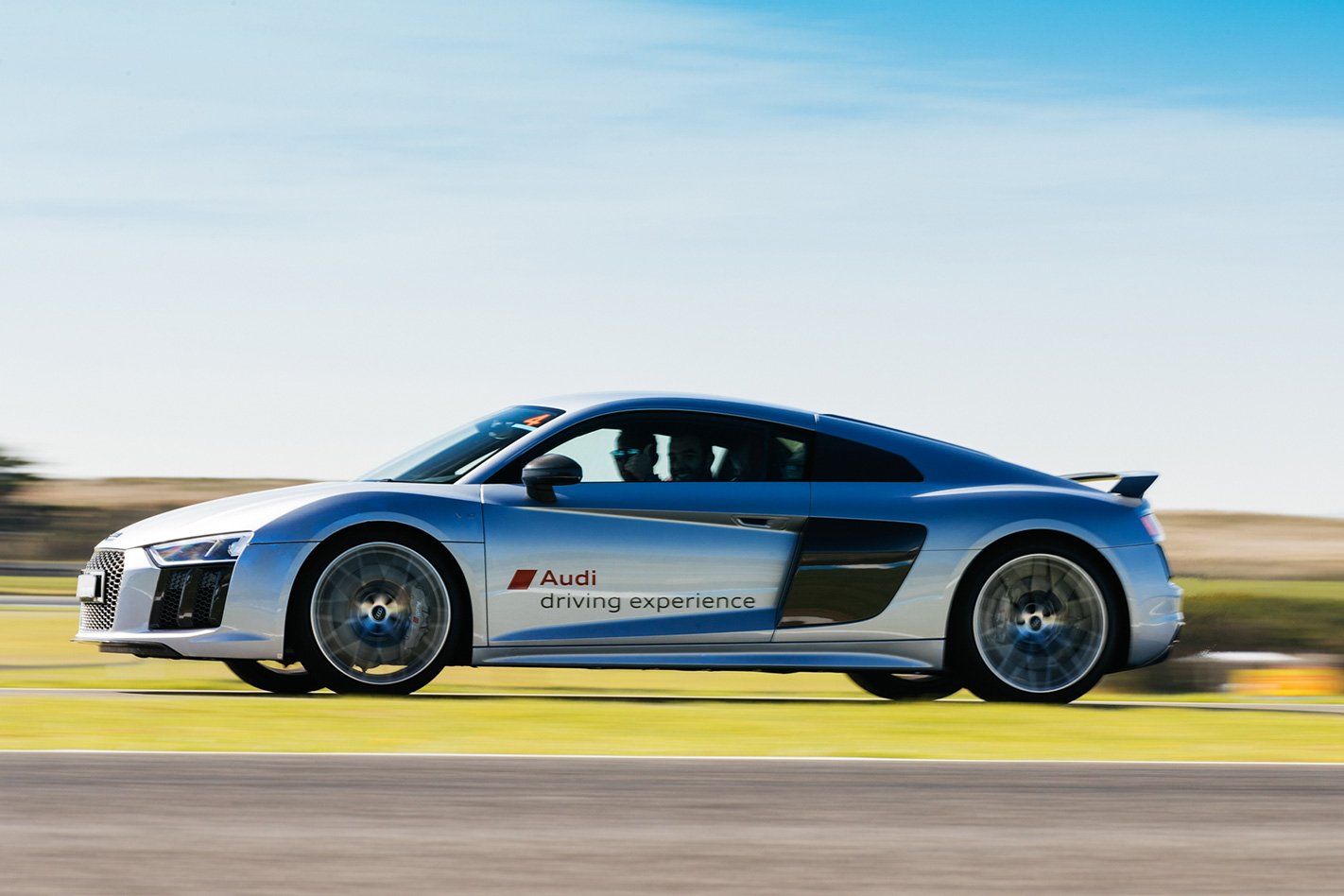
“We’ve got 20 instructors that are all professional race drivers,” says chief Audi driving instructor, Steve Pizzati. “What I call a professional racing car driver is someone who is paid to race in someone else’s car. They’re not driving daddy’s car, they’ve actually had someone come up to them and say, ‘I’ll give you some money to drive my car.’ Trust me, you’re not a better driver than them, at least I haven’t seen someone come in here yet who is.”
The instructors include Bathurst 1000 winner Luke Youlden, and Bathurst 24 Hour winner Nathan Pretty, among others.
Pizzati’s comment is his cue to explain that ‘hero’ drivers who haven’t ‘got it’ by the end of the day’s activities – emergency braking, slalom, skid control and cornering – aren’t safe enough to go fast around the Phillip Island circuit for the finale of the day, driving the RS3, RS5 and TT RS flat out. Having over 1000 laps of the Island under his racing belt, Pizzati has seen the disastrous result of not knowing the basics – like how to stop.
“When I was a boy learning to drive, it was more about skills based stuff – be a better driver, get out of emergency situations, I want to do track days, help me out,” he adds.
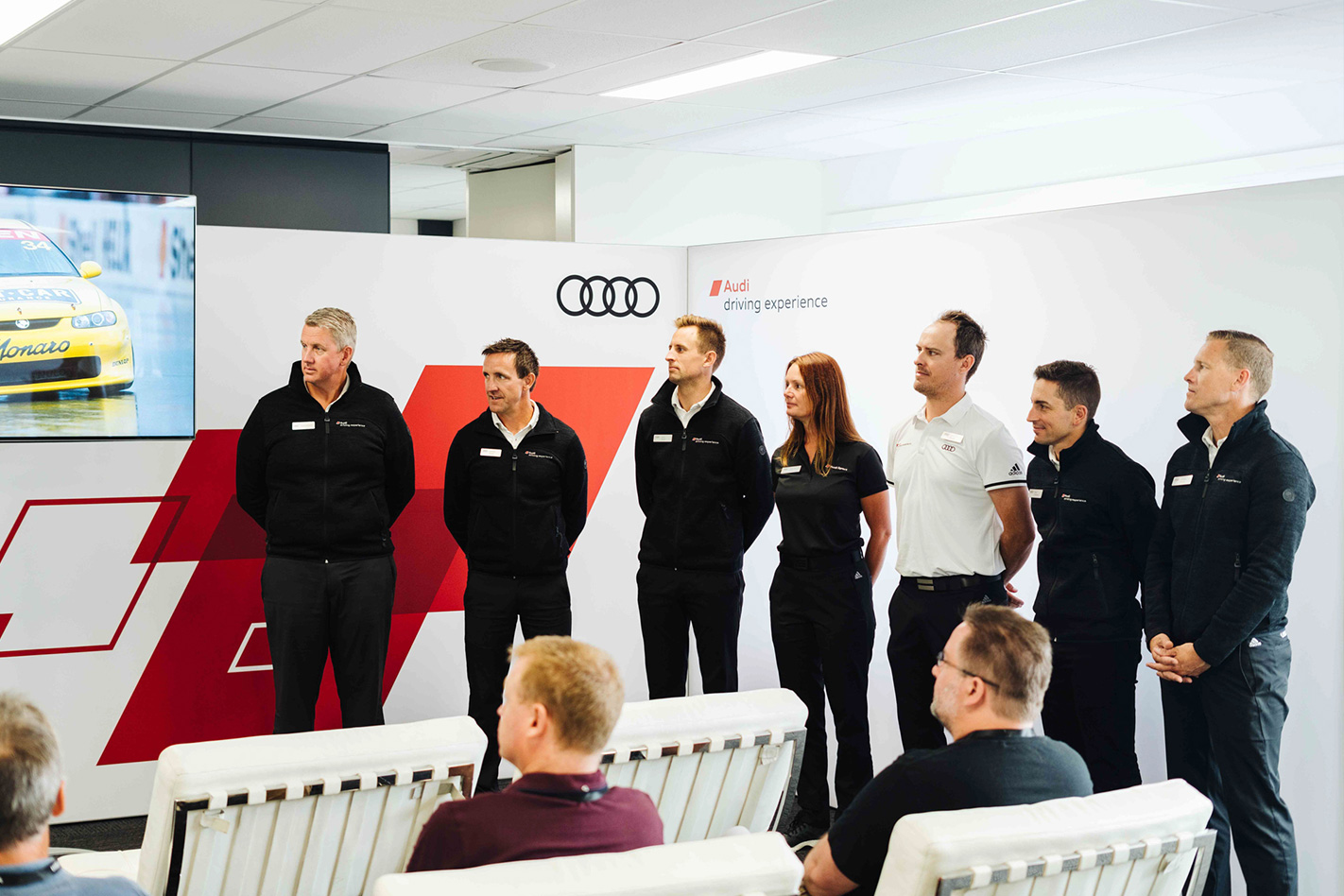
“What happened is that is still there, but there is a far more lifestyle focused approach. People look for lights at the end of the tunnel; it’s nice to have something circled on the calendar to look forward to. You need more to it than just a track and racing car drivers,” Pizzati says, explaining that these sorts of events aren’t just for petrol-head speedster, with dad and daughter duos finding the race tracks and fine machinery on offer– as well as overseas tours – an alluring break from reality, with an important skill-based component.
Depending on how much you pay, you can find yourself piloting an R8, without even owning an Audi. Pizzati admits Audi’s newest Sport Pro course, that lets any punter on the street who stumps up $3500 drive the German brand’s most powerful V10 supercar around a race track, is a bit terrifying for the instructor sitting in the passenger seat. But prove yourself, and the R8 LMS (racing car) is also yours, for a price.
“We’re one of the few brands that allow the general public to do it; you don’t have to be an Audi owner. You don’t even need to be a customer,” he says.
Surprisingly, the idea of steering a racing car at over 200km/h around a race track is apparently much less scary than performing emergency braking. Despite most punters having never felt a car behave a little light at those sorts of high speeds, the idea of ‘having a crack’ out of the gate is less daunting then being told to come to complete stop from a normal legal road speed. It is, of course, a prerequisite to going out on the track.
“I have to assume they’ve done nothing at all,” says the former Top Gear Australia host.
“The morning session is to warm them up and most of the time it is about breaking myths and old wives’ tales, like the hands should be at ten and two, and people are still trying to shuffle steer and it’s funny because they don’t try and do that on the road but the minute there is a race driver there they change as if they’re being tested. I think the same thing happens when people start teaching their kids and it’s quite funny how people revert back to bad technique.
“Emergency braking is a really important one, to do an emergency stop from 110km/h – everyone does that. What’s interesting is when I say we are going to do that, the looks on people’s faces. Yeah, you do that speed every day. Everyone thinks they are an above average driver but don’t want to do an emergency stop!”
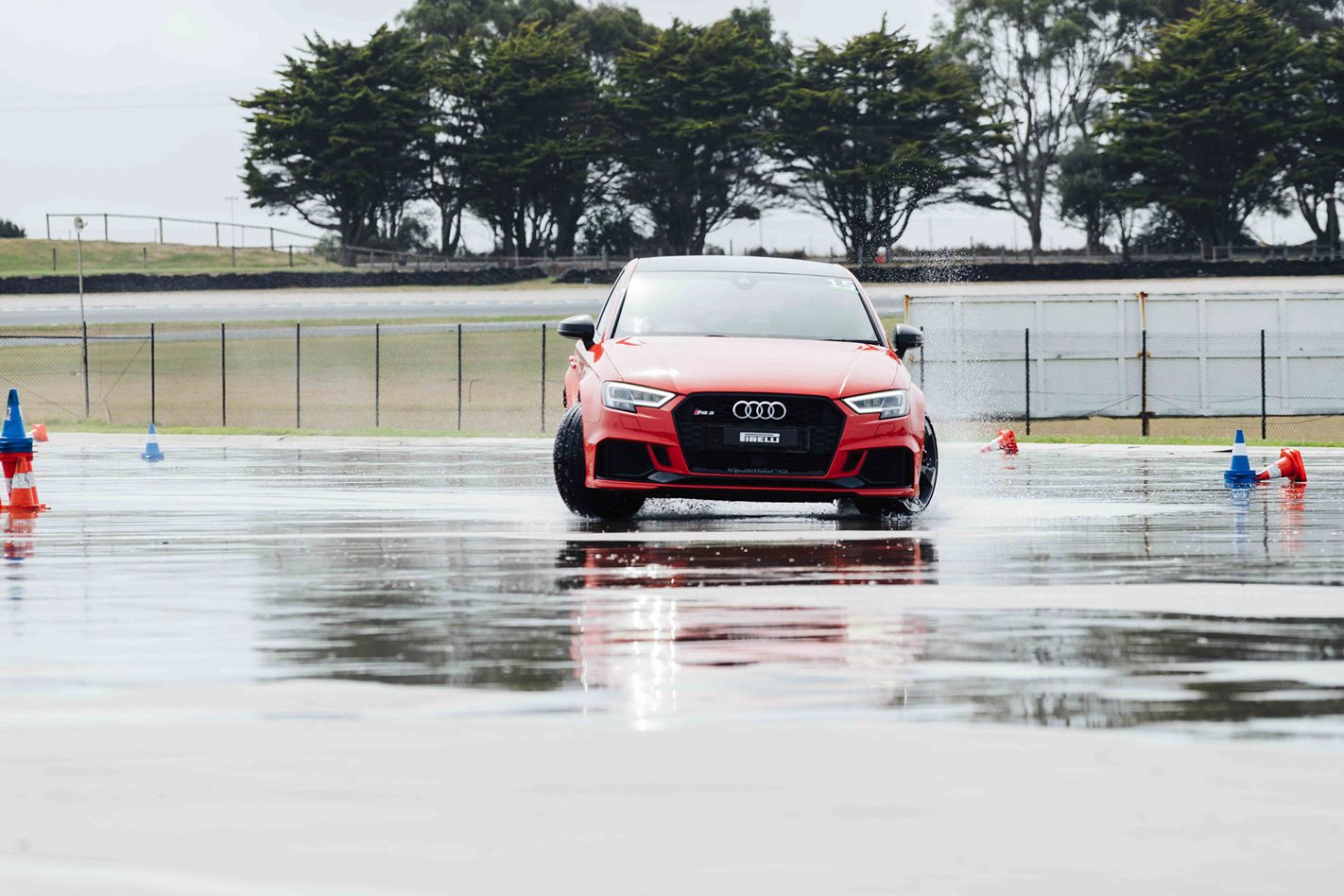
For the first-timer, the emergency stop isn’t what you think it is. It’s not a well-synchronised ballet between the brake pedal, the steering, and how the car reacts before coming to a sudden but somehow graceful stop. It’s comparatively violent – the idea is that a kid has run out in front of the car at 110km/h and you push the brake pedal so far into the firewall that you think you can feel the brake arm start to bend. The car’s smart electronics and ABS take care of the rest, and even on this horribly wet day, the result is an abrupt stop in the shortest time possible. Perfecto. It’s surprising just how many runs it will take before the process feels normal, but it’s a potentially life-saving skill.
The next activity held on the last corner before Phillip Island’s ever-slightly undulating straight is the slalom. Buckled into an RS5 we drive at a series of witch’s hats that we have to simply slalom through. Of course, being quick isn’t easy, and it’s here that the craft of proper driving technique is slowly unboxed.

“We do a slalom and the slalom is one of those really annoying activities because it looks so simple but it’s really hard to get right,” says Pizzati.
“The timing of the eyes, hand and feet is really hard because if you’re out by a tenth and then two tenths your actually out by three tenths. It’s very tricky.”
It’s here that DJR Team Penske endurance driver Tony D’Alberto helps customers unravel the mystery of beating understeer and getting the power down early but steadily. Though the tight course feels too constrained for the RS5’s size and impressive 331kW power, it’s an insight in to how delicate yet rapid it can be on tighter roads.

A step up in pace from the slalom is cornering control, where former V8 Supercar driver Steven Johnson takes us down through the tricky double-apex of Southern Loop towards Honda Corner. Instantly, Johnson’s smooth car control is impressive, and it doesn’t take long for him to impart confidence onto first timers.
Get professional driver training with an Audi R8 V10 Plus on track
“We do cornering because as I tell people, you’re not taught how to corner. I got my licence in Carlton and on that route we went around Melbourne University and back past the pizza shop and it’s all sharp, slow city corner stuff. Then you get your licence and it’s off to the Great Ocean road with Bass Strait down one side. We’re not taught to corner, so we typically use turn four (at Phillip Island), Honda Corner, and get people to approach at 120-150km/h and teach them where to position the car and when do you brake and turn in. No one has felt that.”
In truth, the raucous RS3 supplied for this section of track easily eclipses 150km/h along the short straight before turn 4, and as long as you’re looking settled and smooth, Johnson is happy to let you pick up the pace as he provides commentary on what you’re doing right or wrong from the vantage point of a grassy knoll.

Closing in on lunch, there’s a light breather before we hit the buffet – drifting an RS6.
“The final part is a bit of skid control,” says Pizatti. “We go to the skid pan and everyone wants to drive a high performance car and we do oversteer. Part of that is to give people some fun, but also a life skill and dispel the myth that Quattro (Audi’s all-wheel-drive system) is boring and they don’t slide and it’s not a real car. Every single customer leaves that going I want a Quattro now because a rear-wheel drive slips out on them so quickly otherwise.”
The combination of emergency braking, vehicle dynamics handling and fast cornering forms the basis of getting participants ready to tackle the track in full: three laps alone in an RS3, RS5 and TT RS with only a lead driver. If you pay more, you can drive an R8.
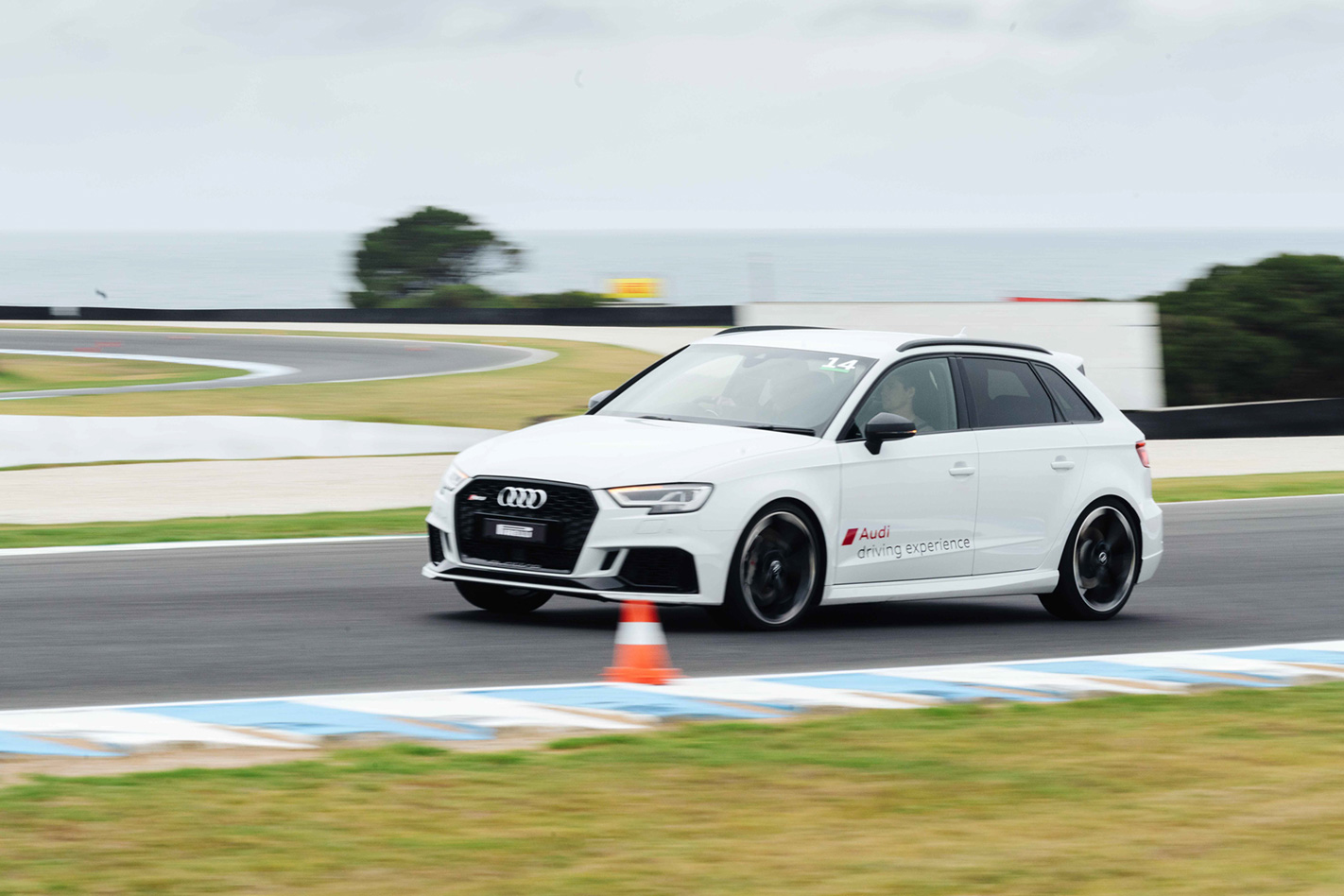
Despite a leading hand during the day, the instructors are less bossy at the end of the day – you set the pace. Pizzati explains that if you’re throwing the car around and hitting the curbs like you haven’t listened to a word all day, the instructors will slow down until you follow their line.
Here’s a hint: if you want a flying lap of Phillip island circuit all by yourself in a belting sports car (or even supercar) – follow the professional racing car driver precisely and smoothly. You’ll only go faster.

At a course cost of $1250, the opportunity to drive brand-spanking new Audi RS sports cars around Australia’s best race track is well worth the temptation. And you’ll learn a lot more than you can brag about when it really counts.
Want to win an Audi Driving Experience? Click here to enter Wheels’ draw to win a two-part driving experience valued at $5500.

